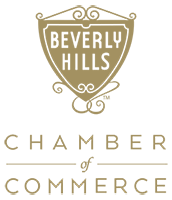Good Geofencing = Smart Marketing
Good Geofencing = Smart Marketing:
How Geofencing Advertising Can Help You Target Your Audience and Eliminate Waste in Your Digital Marketing Campaigns
Have you ever walked out of a local business and been prompted on your smartphone almost immediately by Google to write a review? If so, you were targeted using geofencing technology.
While there are many ways to employ location-based mobile advertising tactics, the practice of geofencing advertising has grown significantly in recent years. It’s no surprise, really. Approximately 81% of Americans own smartphones, and more than 65% check their phones at least 160 times daily. That’s an incredible opportunity for any business.
You could be missing out if you haven’t already added some form of mobile advertising into your marketing strategy.
Geofencing makes it easy. By running a geofencing ad campaign, you can tap your audience’s mobile location information to pinpoint exactly where they are and serve them targeted mobile ads and messages.
Eliminate oodles of media waste? Yes, please! Catch your audience when they are most likely to be in a position to act? Heck yeah, tell me more.
How Does Geofencing Work?
Geofencing works by using special geofencing software to translate a defined geographic area, such as a building, art festival, hospital, or mall, into GPS coordinates. The software then sets a virtual barrier around the area you’ve defined. When a trackable device enters the barrier, the geofence software senses this and permits a response action, such as serving up an ad to the device or registering the date and time.
Geofencing is not a new concept.
Many industries have been tapping location-based GPS technology for various use cases, including logistics, human resources, and security. For example, many companies now automate timecards and payroll using geofence technology. When employees enter their employer’s geofence, they are automatically clocked in, and vice versa when they leave at the end of their shift.
What exactly is Geofencing Marketing?
Geofence marketing uses these virtual barriers to deliver location-based marketing messages to the right audience at the right time. Depending on a campaign’s goals, geofencing marketing may encompass a variety of messaging tactics, such as text messages, app-based notifications, and display advertising.
Until recently, the requirements for geofencing marketing campaigns were relatively cumbersome to deploy. However, as more advertising providers begin to combine geofencing technology with message delivery platforms, this super-smart marketing strategy is starting to trend up.
Perhaps one of the easiest ways to start a geofencing marketing strategy is, to begin with, geofencing display advertising.

Geofencing Advertising Examples
So how can you leverage geofencing advertising for your brand or business? Just like any new marketing strategy, it starts with knowing your audience. Consider these ideas for building your geofencing advertising campaign:
- Proximity Targeting– Businesses with brick-and-mortar storefronts or offices where customers go in person to shop or receive services might set a geofence for the shopping center they are in to drive foot traffic from people who are already in the immediate vicinity. Offering an incentive – such as a one-day 10% discount – can increase their interest and entice them to check out your business.
- Competitor Targeting– This is a perfect use case for a shopping audience, whether it’s ladies’ fashion, car dealers, or new home developers. If your audience is looking for a specific type of merchandise or a great deal, they are likely to visit more than one location. By geofencing your competitors, you can serve their consumers with geofence ads letting them know how your products or services may suit them better.
- Lifestyle Targeting— Understanding your audience is key to deploying this geofencing strategy. In this scenario, you would look for types of locations that your audience is likely to frequent. For example, a management training recruiter might target colleges. Or a plastic surgeon might target a combination of nearby gyms and beauty supply stores.
- Needs-Based Targeting– Some businesses must be more creative (or opportunistic) with how to take advantage of location-based mobile advertising. For example, a personal injury attorney might set geofences around emergency rooms at area hospitals. Or a restaurant trying to increase its lunch crowd might geofence nearby office buildings.
What does it cost to start a Geofencing Advertising Campaign?
Getting started with a geofence advertising campaign is surprisingly affordable. Geofencing advertising is typically deployed and sold like a digital display campaign, typically using a cost per thousand (CPM) or cost per action (CPA) model. The exact CPM will depend on your audience, location, size, and several geofences. At Dragon Horse Agency, our basic package includes up to 20 geofences with a $3,000 minimum. Larger budgets can take advantage of more geofences. This pricing makes geofencing ads extremely competitive with broad-based display advertising.
Geotargeting vs. Geofencing
You may be wondering: What’s the difference between geotargeting and geofencing? Many advertising platforms offer geotargeting capabilities, including Google Ads and Facebook Ads. This functionality is designed so you can provide different types of messages to different audiences. For example, if you have multiple locations throughout Florida, you may want to build familiarity using images featuring each storefront. To do so, you could segment a geotarget for each location using a 25-mile radius around each address.
Some of these platforms allow you to target very tightly, with both Google and Facebook permitting geotargeting as small as a one-mile radius. Technically, these boundaries are using similar location-based, GPS, or IP address technologies. But if you have a well-defined audience, these larger geographic perimeters contain a great deal of waste, with a large percentage of ads hitting consumers who do not need your products or services.
Why use a shotgun when you can aim smartly with a rifle?
Essential Considerations for Geofencing Advertising
As you start to think about your options for launching a new geofencing advertising campaign, consider these tips to maximize impact and value to your business:
- Know your audience before you start a location-based mobile ad campaign.
Ensure you understand how your audience shops for your product and how their lifestyle impacts their whereabouts. Geofencing advertising is all about location, so you have to be able to anticipate where they might travel throughout an average day. - Don’t set your geofences too large or too small.
The smaller the geofence, the less traffic will likely pass through it. This can make your CPM more expensive, and it may take longer for your campaign to hit impression goals. Larger fences can make it easier to find your audience and, therefore, could help keep CPM lower. But you may also end up with wasted impressions that miss your intended audience or the possibility of spreading your budget too thin to have an impact. Having said that, there’s no such thing as a perfect size geofence. Each campaign will have its own goals. A downtown proximity campaign might determine that a 4-5 minute walk is optimum, or a competitive campaign might focus tightly on the perimeter of the target business. - Offer a clear call to action and an incentive when someone sees your geofence ads.
Catching people in the right place at the right time is only half the battle. Ultimately, the goal is to get them to stop by your store or office immediately or at least make contact with you while they are in the right frame of mind. You should seriously consider offering a discount or other compelling incentive for same-day action, whether you’re seeking foot traffic, a phone call, or a form submission on your website. - Measure and optimize your geofencing campaigns.
Key performance indicators for mobile geofence campaigns are similar to display campaigns, including impressions, clicks, click-through rate, and qualified foot traffic. Secondary metrics might include the time of day and date. These can all be used to adjust and improve your geofence campaign performance.
Turn to Dragon Horse Agency for Your Geofencing Advertising Needs
A geofencing advertising campaign can add a dose of energy and excitement to an existing marketing strategy. Still, it can also be an affordable cornerstone tactic for a new or emerging business ready to break out. The opportune timing of serving a competitive message right when your audience is in that frame of mind cannot be overstated.
Dragon Horse Agency can expertly guide you through the geofence advertising process and manage your campaigns from content to execution. We’ll help you scope out smart geofence locations and ensure your campaign creative and messaging are spot-on for maximum results. We’ll also provide you with thorough reporting and analysis.
Genie O’Loughlin , Dir. of Digital Communications at Dragon Horse Agency.
Genie O’Loughlin is the Digital Director for Dragon Horse Agency, Southwest Florida’s dynamic full-service marketing and media agency. Genie is a 25+ year marketing veteran and broad-based digital marketing expert who has helped organizations succeed in a wide range of disciplines, from search engine optimization (SEO) and pay-per-click (PPC) to social media and lead generation. She served for ten years as a Board Director for the South Florida Interactive Marketing Association.
A unique talent with a penchant for data analysis as well as creative execution, Genie has worked both for marketing agencies as well as in-house for some of the nation’s largest brands, including Tribune Company, a Fortune 500 company at the time, and JM Family Enterprises, among the top 20 privately held US companies, according to Forbes.
Let Dragon Horse Agency take your marketing to the next level.
Contact us today at:
Dragon Horse Agency
100 Wilshire Blvd, Suite 700
Santa Monica, CA 90401
310.917.1009
848 1st Ave. North, Suite 200
Naples, FL 34102
239.325.5088
info@dragonhorseagency.com
www.dragonhorseagency.com
Dragon Horse- West Coast Contact:
Robert Kennedy
310.917.1009
rkenney@dragonhorseagency.com
“There is marketing, and then there is business marketing, only at Dragon Horse.”






